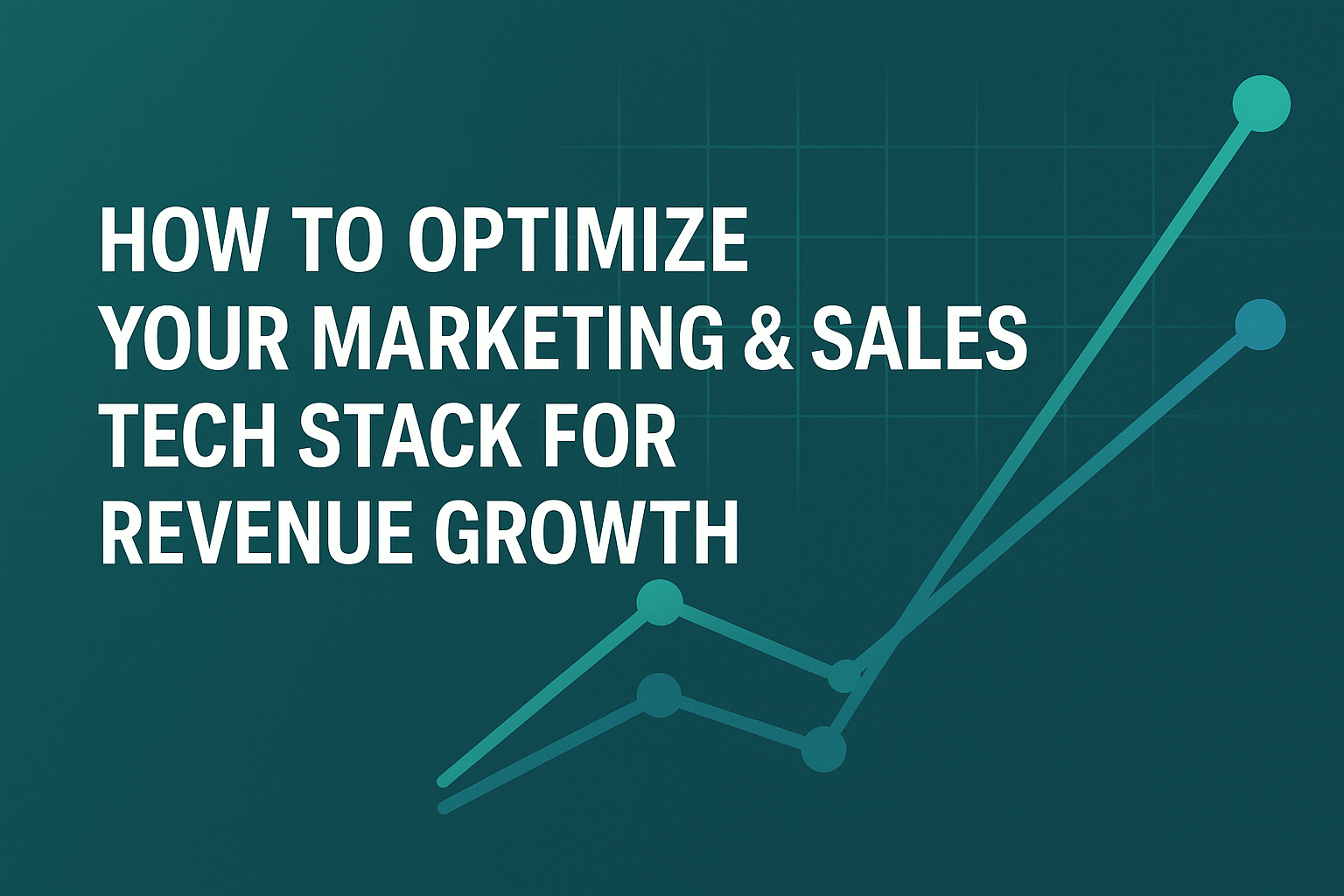In today’s marketplace, simply investing in best-of-breed marketing and sales tools is no longer enough. Without a cohesive strategy, aligned processes, and automation that actually drives action, your tech stack can become a cost center — or worse, a source of friction between teams. At KR1STNA Media, we’ve helped B2B and enterprise clients transform chaotic martech and sales tech landscapes into streamlined revenue engines. Here’s how you can do it too.
- Audit the Current State: Tools + Processes + People
Before you add any new tool or campaign, start by assessing three dimensions:
Tools: What systems are in place? CRM, marketing automation, analytics, ad platforms, event systems, etc. Are there gaps? Is there overlap?
Processes: How do leads flow from marketing to sales? Are there defined hand-offs, SLAs, scoring rules, and feedback loops?
People: Do your teams know how to use the tools? Are roles and responsibilities clearly defined? Does everyone understand the goals?
Tip: Map the lead-to-revenue journey visually. Highlight where leads drop off, where data duplicates, where automation is missing, and where alignment fails. This sets the foundation for optimization.
- Define a Unified Revenue Operations Strategy
Revenue operations (RevOps) isn’t just a buzzword — it’s a philosophy of aligning your marketing, sales, and customer success teams around a single source of truth and unified process. To implement it:
Establish a shared data model (lead-account-opportunity) and ensure your CRM reflects it.
Align your automation triggers so that marketing nurtures seamlessly and hand off to sales when a lead meets qualified criteria.
Create dashboards that reflect pipeline status, conversion metrics, speed-to-engagement, and ROI of each tool/channel.
Design feedback loops: e.g., sales provides input into lead scoring, marketing adjusts flows accordingly.
When done right, you move from campaign-centric to revenue-centric operations.
- Rationalize Your Tech Stack: Remove, Replace, Refine
Too many tech stacks become bloated: multiple automation platforms, duplicate CRMs, disconnected analytics — this creates confusion. A rational tech stack means:
You keep the right tools for your business size and model (not just what’s trendy).
You integrate best-in-class tools in a way that data flows cleanly (reduce silos).
You retire redundant systems and consolidate where possible.
You phase in new tools only when they address a current strategic gap (not retroactively).
Example: A mid-sized B2B firm might streamline to: a CRM (HubSpot/Salesforce), marketing automation (if separate), event management system, analytics/dashboard layer, and a campaign execution platform. Ensure these tools talk to one another and support the handoff from marketing to sales to renewal.
- Automation & Lead Scoring: The Engine for Growth
With your stack aligned, marketing automation becomes the engine that turns cold interest into warm, qualified opportunities. Focus on:
Lead scoring parameters: track behavioral (downloads, site visits) and explicit (job title, company size) indicators.
Nurture flows that adapt to where a prospect is in the buyer’s journey (top of funnel, mid funnel, decision phase).
Trigger-based handoff: once a lead scores above the threshold, automatically notify sales and pass the record with context.
Reporting: know which flows convert, which channels deliver, which score-zones need adjustment.
When you build automation thoughtfully, you reduce manual hand-offs, increase speed, and improve lead quality for sales.
- Measurement & Continuous Optimization
Your tech stack and processes aren’t static—they must evolve. Implement a culture of measurement and refinement:
Define key success metrics: pipeline growth rate, lead conversion rate, opportunity win rate, ROI per channel/tool.
Setup dashboards with alerts: when a metric dips below expectation, investigate root cause.
Hold periodic reviews: quarterly or monthly, revisit tool usage, data hygiene, process adherence, and automation logic.
Stay agile: new tools emerge, buying behaviours shift, what worked last year may lag this year.
Pro tip: Assign a “stack owner” (or team) responsible for maintaining the health of the tech stack, monitoring integrations, ensuring data accuracy, and aligning ongoing enhancements with business goals.
- Bring in Strategic Execution Support (When Needed)
While many companies can run tools internally, the real value often comes from strategic execution support. That’s where firms like KR1STNA Media step in. Key areas we help with:
CRM implementation or migration (e.g., Salesforce to HubSpot)
Marketing automation setup and nurture flows
Process optimization across marketing, sales, ops
Media and creative execution tied into automation (ads, social, events)
Analytics & reporting setup
Training internal teams and establishing stay-in-flow governance
If your business is at the point where growth is constrained by tool/people/process gaps—and you want a partner that delivers both strategy and hands-on execution—this is where you’ll see the biggest ROI.
Conclusion
Optimizing your marketing and sales tech stack is not a checkbox exercise—it’s a strategic, ongoing initiative that involves people, processes and tools. When aligned effectively, it unlocks faster pipeline velocity, higher conversion rates, improved ROI and sustained growth. If your tech stack is under-performing, misaligned or simply overwhelming, it’s time to reimagine it with a revenue-centric lens.
Take a moment now: map your current state, identify the biggest gap (tool, process or people), choose one improvement you can implement this quarter, and commit to measuring the outcome. One quarter transforms into one year—and one year into accelerated growth.
Ready to move from chaos to clarity? Contact KR1STNA Media today for a complimentary stack audit and roadmap session. Let’s align your tech, processes and people for a revenue-first future.



